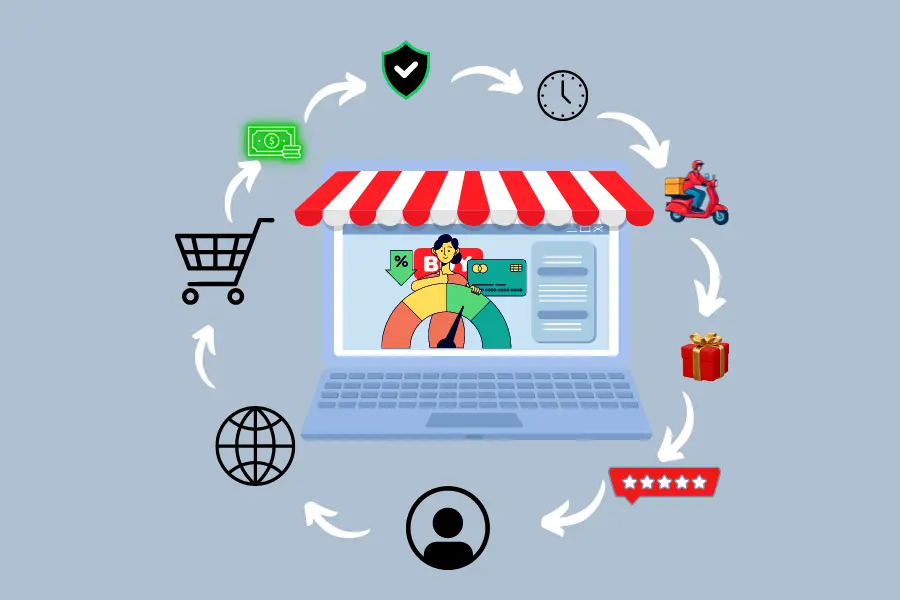Dynamic Pricing Strategies
Amazon employs data science extensively to innovate and optimise its e-commerce platform, particularly in the realm of dynamic pricing strategies. Here’s a detailed overview of how Amazon leverages data science for dynamic pricing:

1. Data Collection
Amazon collects vast amounts of data from various sources, including:
- Customer Behaviour: Browsing history, search queries, and purchase history.
- Competitor Prices: Regular monitoring of prices from other retailers.
- Market Trends: Analysis of market demand and seasonal trends.
- Inventory Levels: Real-time tracking of stock levels.
- Customer Reviews and Ratings: Feedback on products and overall shopping experience.
2. Machine Learning Models
Amazon uses sophisticated machine learning algorithms to analyse this data and make pricing decisions. These models consider various factors:
- Price Elasticity: Understanding how changes in price affect demand for a product.
- Competitor Pricing: Real-time adjustments based on competitor prices to remain competitive.
- Historical Data: Analysing past sales data to predict future demand.
- Customer Segmentation: Tailoring prices based on different customer segments.
3. Dynamic Pricing Algorithms
Amazon’s dynamic pricing algorithms adjust prices frequently, sometimes multiple times a day, to optimise sales and profitability. These algorithms incorporate:
- Predictive Analytics: Forecasting future sales and demand to adjust prices proactively.
- Real-Time Data Processing: Using real-time data to make immediate price changes.
- Optimization Techniques: Applying optimization models to balance between maximising revenue and maintaining competitive pricing.
4. A/B Testing and Experimentation
Amazon employs A/B testing to evaluate the effectiveness of different pricing strategies. By experimenting with different prices and monitoring customer reactions, Amazon can fine-tune its algorithms for better performance.
5. Personalization
Amazon uses data science to personalise prices for individual customers. Factors influencing personalised pricing include:
- Customer Purchase History: Offering discounts or special prices based on past purchases.
- Browsing Behaviour: Tailoring prices based on products viewed or added to the cart.
- Customer Loyalty: Offering different prices to Prime members or repeat customers.
6. Inventory and Supply Chain Management
Dynamic pricing is also linked to inventory and supply chain management. By integrating pricing strategies with inventory data, Amazon can:
- Optimise Stock Levels: Adjust prices to manage inventory levels efficiently.
- Reduce Overstocks and Stockouts: Use pricing to control the flow of goods and avoid overstock or stockout situations.
- Supplier Coordination: Work with suppliers to adjust prices based on supply chain dynamics.
7. Data-Driven Insights
Amazon continuously gathers insights from its pricing strategies to improve its models. Key metrics include:
- Sales Performance: Analysing how price changes affect sales volumes.
- Customer Satisfaction: Monitoring customer feedback and satisfaction related to pricing.
- Profit Margins: Evaluating the impact of dynamic pricing on overall profitability.
Amazon's use of data science in dynamic pricing strategies is a cornerstone of its e-commerce innovation. By leveraging vast amounts of data, advanced machine learning models, and continuous experimentation, Amazon can optimise its pricing to enhance customer satisfaction, stay competitive, and maximise profitability.
Active Events
Data Scientist Challenges One Should Avoid
Date: April 29, 2025 | 7:00 PM (IST)
7:00 PM (IST) - 8:10 PM (IST)
2753 people have registered
Your Data Science Career Game-Changing in 2024: Explore Trends and Opportunities
Date: May 2, 2025 | 7:00 PM (IST)
7:00 PM (IST) - 8:10 PM (IST)
2811 people have registered
Bootcamps
Data Science Bootcamp
- Duration:8 weeks
- Start Date:October 5, 2024
Full Stack Software Development Bootcamp
- Duration:8 weeks
- Start Date:October 5, 2024
